With our wildlife habitats increasingly under threat, especially wildflower meadows, every garden should be treated as a potential nature reserve, rather than solely a designed space for the needs of humans.
If you garden for wildlife you will be adding an extra dimension not only to your garden, but to your skills as an enthusiastic gardener or garden designer! Perhaps what is not generally understood is that even a small garden can be designed and managed in a manner that wildlife will be able to become part of the fabric of the garden, rather than just visitors to the garden, thus making a huge difference to wildlife communities. A few basic principles can make such a huge difference.

For example… the most wildlife-friendly gardens are mostly plants with little ground showing at all! If you think about it logically, this is because it will provide cover/shelter for mammals, birds and insects from predators as well as the elements.
Additionally, the action you take to make your garden a local home for wildlife also helps to connect habitats together from neighbouring gardens to nature reserves and wild habitats in general. For more information on this subject have a look at one of our previous blogs… habitat fragmentation.
A small garden in Hampshire…
On the 20th March we were approached by Andrew and Linda who wanted to enhance their lawn by trying to increase the overall biodiversity of their garden, with the general aim being to attract more bees and butterflies.
They had a few areas within their front and back garden where they wanted to install the Wildflower Turf to help them attract wildlife to the garden.
It has been a real success, and they have managed to create little meadows within their garden. It illustrates how you can integrate the turf within the more formal style of planting that most of us have in our gardens.
The first two images show the front garden where the turf has been installed within a relatively narrow border. The turf looks fantastic and has been successfully incorporated with the other plants.
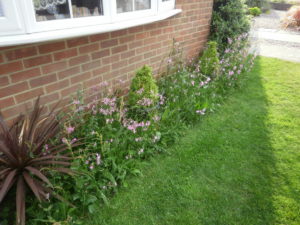
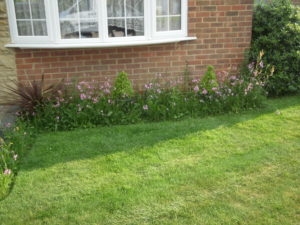
The two images below highlight how a small area of lawn can be enriched with only a few square meters of Wildflower Turf. Allocating the corner of your lawn is a good idea, it not only frames the area but also adds a point of interest. The second images demonstrates how the edge of the path can be softened with the use of wildflowers.
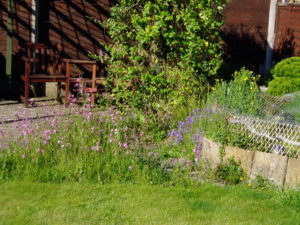
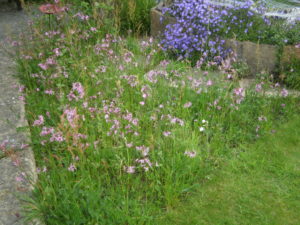
Even the resident duck has taken to the idea of the wildflower meadow! Andrew explained that, ‘our duck was a bit confused at first, but seems to be getting used to them’!
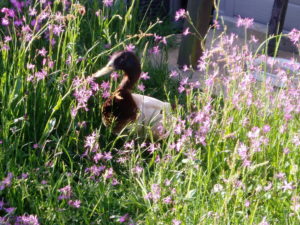
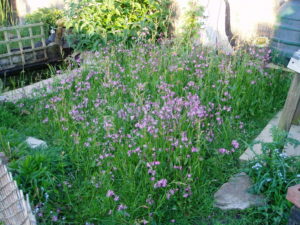
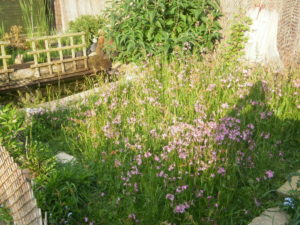
The image below is a great example of how the Wildflower Turf can be used as a wildlife corridor to connect up various habitats or areas within the same garden.
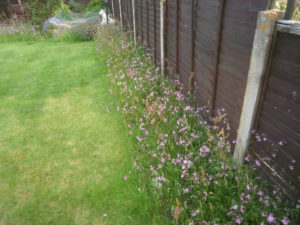
Andrew and Linda had these very kind words to say, ‘We just thought we would write to thank you for the all the time and advice you gave us on our small purchase of Wildflower Turf back in March. Also the cheerful assistance I had in loading my car’.
‘They have turned out really well, as you said they would and here are a few photos to show how our bland lawns have been changed into a haven for bees and butterflies’.